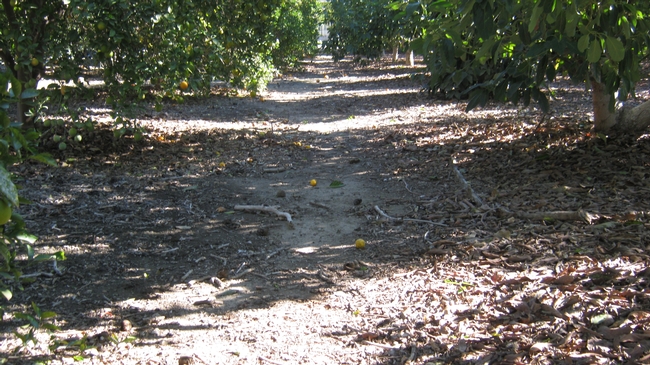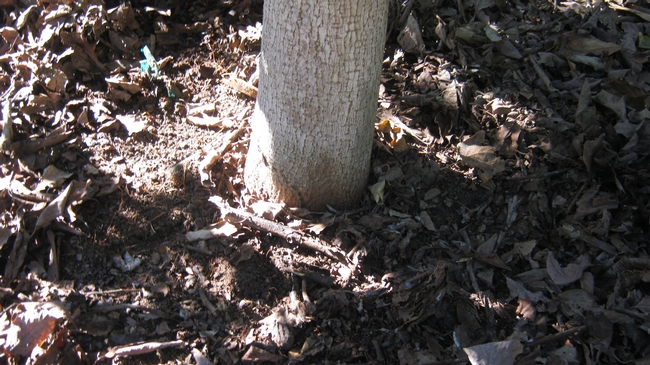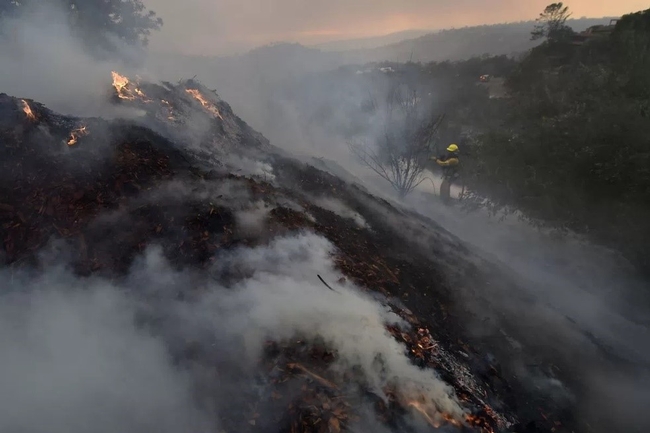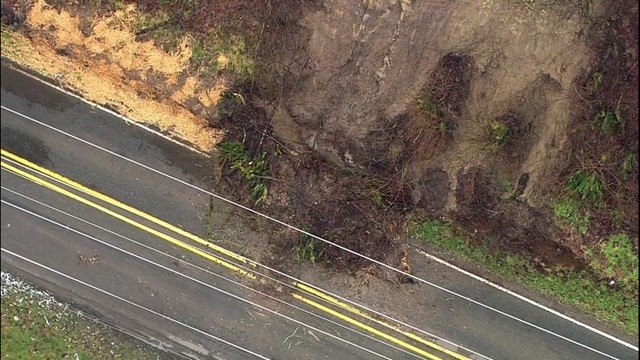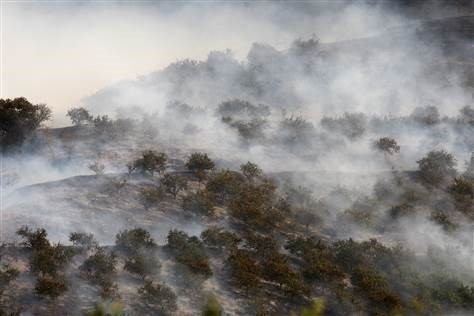- Author: Sonia Rios, Julie Pedraza and Ben Faber
Firefighters from all over the country worked around the clock to put out fires throughout the state of California. Fires could be devastating to growers and, in some ways, they could be beneficial by reducing populations of weeds and unwanted vegetation. However, after the loss of vegetation after a fire, growers have to prepare for the next possible disaster- mudslides, debris flow and flashfloods. Vegetation that once secured soil and gravel, preventing erosion on mountain and hill slopes is no longer there. Instead the waxy residue from burnt plant debris has formed into a baked waxy layer that prevents water from infiltrating more than a few inches into the soil, creating a water-proof surface layer. When a significant amount of rainfall occurs after a fire, it becomes an environment for a mudslide.
According to Randy Brooks, author of the article “After the Fires: Hydrophobic Soils,” during a fire, burning plants release gases from waxy plant substances that permeate through the soil pore space, coating soil particles with a hydrophobic substance, thus repelling water. Over time, the wax-like, hydrophobic layer that has formed a few inches below the soil could persist in repelling water causing damage years later. Orchard trees with shallow roots can be destroyed and/or develop weakened root systems if a mudslide occurs post-fire. As rain continues to fall, large chunks of topsoil can break loose and slide down sloped landscapes. In some cases, mud and debris can exceed 35 mph, causing massive damage and major mudslides.
Rapid moving mudslides can enter into infiltration basins, irrigation canals, and reservoirs moving silty-clay sand suspension sediment that could clog pumps and irrigation lines creating an expensive problem for growers.
Erosion in Orchards Post-Fire
Post-fire rains result in the transport of fertile soil particles into downstream waterways. These sediments can carry unwanted pesticides and nutrients that adhere to them. Erosion problems can include water pollution, loss of soil quality, increased flooding, impairment of stream ecosystems, decreased groundwater storage, release of carbon, slope failures, degradation of habitat and loss of species, damage to downstream lands and properties. Not to mention the amount of time and costs associated with addressing these issues.
Preventable Management Practices
Orchard floor management can include anything from the addition of soil amendments to changes in tillage practices. One way to minimize soil erosion is to implement management practices that improve soil structure. Soil structure is the arrangement of mineral particles into aggregates. A well-structured soil having stable aggregates can easily accommodate infiltrating water that decreases runoff and reduces erosion. In addition, stable aggregates resist particle detachment, prevent the formation of crusts, and are less susceptible to compaction. Light tillage where possible can break up the hydrophobic topsoil layer post-fire, followed by planting a cover crop, such as a grass or a forb can prevent soil erosion and be a moderate barrier in the event of a mudslide.
Mature avocado groves have high soil organic matter (SOM) due to leaf mulch and fine rootlets that die and decompose in the shallow soils. Soil organic matter promotes good soil aggregation and stable aggregates. The form of SOM that binds soil particles together into aggregates is called humus, which consists of highly decomposed organic material. Humus results from the breakdown of mulches, roots and any amended organic materials like compost or other supplemental mulches.
Periodic application of organic materials is a proven method for improving the water-infiltration capacity of certain soils: those that suffer from weak structure due to low organic matter content.
In many situations it is neither practical nor feasible to add soil amendments as an erosion control practice. Cover crops are an excellent alternative to reduce soil erosion. They protect the soil from raindrop impact, prevent the formation of surface crusts, increase infiltration rates, and intercept sediment-rich runoff. Cover crops are also a great source of SOM. Critical aspects to consider are nutrient and water competition with crops, cost of additional water for irrigation, shade tolerance, crop height, and maintenance practices such as mowing.
Like most management practices, cover cropping has disadvantages, too. All cover crops use water, some are invasive, some serve as habitat for pests, some can increase the potential for frost damage, and they may be costly to establish.
Management practices are ever changing for prevention and protection of orchards every year especially against fire and mudslides. Being informed and assessing the situation post-fire adds value to how we can evaluate the cost of protecting orchards and economically prepare fields from mudslides damages.
- Author: Ben Faber
The very fact that avocados can be grown in hard to get to places means that the trees are also in areas that are subject to wildfire damage. Recently several hundred acres of avocado burned in the foothills. The fire was fanned by high winds and low humidity.
Every year there are avocado trees that burn, either through careless attention to early morning fires that pickers build, wildfires or car accidents. A grower needs to be patient and observant to bring the trees back into production.
Although injury to foliage and young growth is visible within a few days of the fire, the full extent of the damage may not be known for several months or possibly the next growing season. In the case of severe injury, die-back may continue to occur for several months after the fire. New growth that occurs after the fire may suddenly collapse the following year when the growth is tested by Santa Ana conditions.
The important rule to follow after a fire is to do nothing - don't prune, don't fertilize and maybe don't water. Or rather, water very carefully. Dry winds may have sucked the water out of the ground and may need to be replenished. The fire may have burned the irrigation lines and need to be replaced.
In the meantime, if the tree has been defoliated by the fire, it has lost its ability to transpire water. Watering a tree with no leaves will set up those conditions that are conducive to root rot. Until the tree begins to leaf out, watch soil moisture to decide how much water the trees are pulling out of the soil. The emitters should be capped or plugged on some leafless trees. Then as the tree puts on new growth, shallow, infrequent irrigations should start. This may mean replacing the 10 gph microsprinkler with a 1 gph dripper if only a portion of the orchard has been burned and the rest of the trees need their usual amounts and frequency of water.
The avocado has a tremendous ability to come back from fire and frost damage. However, the tree will tell you where it is coming back. It will start pushing growth where the tree is still healthy. It may take 3 to 6 months for this growth to occur.
Delay pruning until the tree clearly shows where it is going to regrow. By waiting, you save the expense of having to return sometime later to remove more wood and also will be able to save the maximum about of tree.
An activity the grower can perform is whitewashing. The defoliated tree can be further damaged by sunburn after it has lost its protective cover of leaves. The upper surface of horizontal limbs and the south sides of exposed trunks are the most affected. The whitewash can delay the appearance of new growth, but it does not affect total growth. There is usually no value in applying the whitewash to small limbs.
There are various commercial whitewashes on the market. The easiest to prepare is the cheapest white latex paint on the market mixed with water to the extent that it will go through a sprayer.
Avocado trees have a great ability to recover after fire damage. Even trees killed below the bud union will frequently develop into good trees if they are rebudded and given good care. Trees which do not put out vigorous sprouts should be removed. Interplanting avocados would rarely be advisable because of their rapid recovery.
Fire Information:
http://ceventura.ucanr.edu/Agricultural_Threats/Fire_Information/
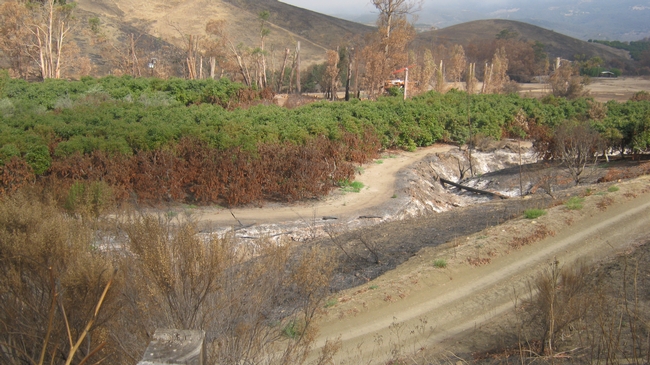
- Author: Ben Faber
A great idea from Ed McFadden of Philmore
You can always do something to prevent or correct the Big 4 that seem to strike avocados on a regular basis somewhere in California. Avocados in the back country are right up against areas that can burn easily. A fast fire can send embers into an orchard which can burn through the thick leaves in a slow burn. If it gets up against leaves piled up against the trunk, it can girdle the tree, killing it. The slow burn can continue through the orchard torching the irrigation lines. With a small fire break where the leaves are removed in a small alley, the burn can be slowed or stopped.
Leaves are great for erosion control, for nutrient cycling and disease control, but if they mean increasing potential for fire spread, it's a good idea to remove a little of it. Ed has found that a backpack blower can rapidly remove leaves from around the base of trees and create a narrow fire break that can reduce fire damage to trees.
Avocado orchards are notable for their ability to actually reduce fire hazard and slow major fires as has been shown in fires in San Diego, Ventura and Santa Barbara. This is partly due to running sprinklers during wild fire. But tree loss can still occur, especially when electricity goes down and pumps can't run.
Little rain this year or too much rain this year can always pose a hazard to avocado orchards. This sure seems like a good idea to me. And maybe it's time to start thinking about fire season now.
Photos: Cleared alley and trunk.
